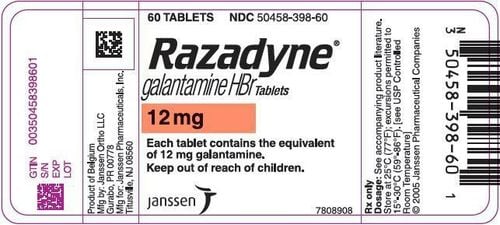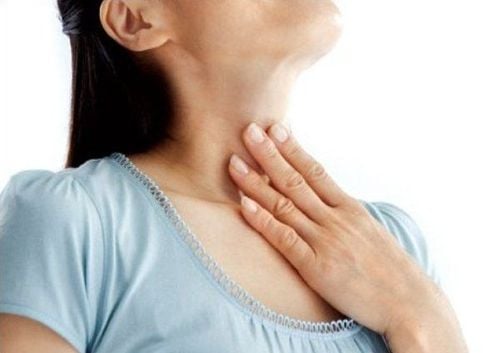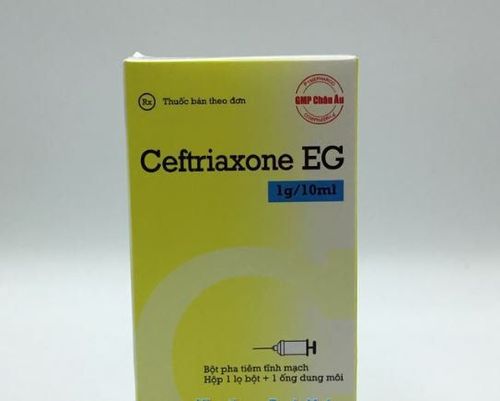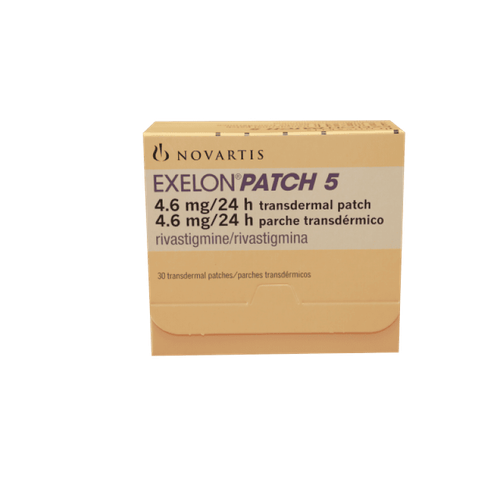This is an automatically translated article.
Seasonal change is an ideal time for infectious diseases to break out. The most prominent and dangerous is probably meningitis, especially caused by Haemophilus influenzae group B. Meningitis in children has manifestations. silent, the course is often severe and contagious. Therefore, it is necessary to detect and treat children early to avoid dangerous complications.
1. Purulent meningitis in children
Meningitis in children is a condition in which the meninges are attacked by pathogens capable of producing pus (mostly bacteria). This is a common infectious disease in young children, most often in the group under 5 years old with a high risk of death and if cured, it also leaves many dangerous sequelae.
The most common causes of meningitis in children include Streptococcus pneumoniae (pneumococcal), Haemophilus influenzae, and Neisseria meningitidis (meningococcal). For meningitis in infants, it can also be caused by other agents such as Escherichia coli, Listeria monocytogenes, B. streptococcus. In addition, the disease can be caused by many other bacteria and fungi, but they are less common and often appear in immunocompromised patients.
Among the causative agents of meningitis in children, Haemophilus influenzae group B (referred to as Hib) is a common agent and easily leads to many dangerous complications. This type of bacteria resides in the nasopharynx, spreads through the respiratory tract and is easy to create large outbreaks, especially in countries where many Hib vaccines have not been vaccinated. Unvaccinated, Hib bacteria can cause severe pneumonia in 1⁄4 children and 1⁄2 cases of meningitis.
2. Is the child with purulent meningitis dangerous?
Children with purulent meningitis are dangerous, the answer is extremely dangerous. This disease can occur all year round, causing many serious consequences for health, especially rapid progression and death if no timely intervention measures are taken. At the same time, meningitis in children, if detected late or not properly treated, will leave permanent neurological sequelae such as:
Brain damage; Subdural effusion; Hydrocephalus (a condition in which fluid accumulates in the skull causing cerebral edema); Dumb, reduced or lost hearing (permanent deafness); Paralysis of limbs; Cross-eyed; Seizures, convulsions; Dementia , loss of learning ability; Children with purulent meningitis die quickly due to severe respiratory failure, cerebral edema, complications due to brain parenchymal infection accompanied by pneumonia, severe kidney failure...
According to statistics, the mortality rate Mortality of meningitis caused by Hib bacteria is up to 15-20%, especially high in children under 2 months old and immunocompromised children. In addition, only about 45% of children with meningitis recover and leave no sequelae, about 15-25% of mild nerve damage, 20-40% of severe nerve damage and Up to 10% leave severe permanent neurological sequelae.

Vi khuẩn Haemophilus influenzae nhóm B gây bệnh viêm màng não mủ ở trẻ em
3. Note the manifestations of meningitis in children
Symptomatic presentation of meningitis in children usually includes systemic inflammatory symptoms such as fever, altered mental status (irritability and/or lethargy) combined with meningeal symptoms (such as stiff neck sign). in children over 18 months old).
For infants under 3 months of age, meningitis is often difficult to detect because the clinical symptoms are more subtle. At the same time, it is difficult to distinguish the clinical signs between purulent meningitis and non-purulent meningitis (viral etiology), however, purulent meningitis is often more severe and viral meningitis is more severe. seasonal trends.
Clinical manifestations of purulent meningitis in children include:
Infectious syndrome: Children often have high fever, sudden, sometimes symptoms of upper respiratory tract inflammation or unreasonable fussiness or lethargy, fatigue. fatigue, poor feeding, pale skin; Meningococcal syndrome: Includes functional symptoms such as nausea, vomiting, headache (the child is violently fussy or sometimes cries out in waves), photophobia, lying in the trigger position. On examination, the doctor noted symptoms such as stiff neck, meningeal signs (eg, Kernig, Brudzinski, meningeal lines) were positive. Some children with fontanelle may notice signs of anterior fontanel bulging with lethargy or expressionless eyes; Other symptoms include convulsions, focal paralysis, coma, astrocytic purpura (characteristic of meningococcal bacteria); For infants and children under 3 months of age: Risk factors for meningitis include premature birth, amniotic infection, or postpartum asphyxia. Symptoms of infection are often unknown, the baby may not have a fever or vice versa, hypothermia. Meningeal syndrome is also unknown, often insidious. Other suggestive symptoms include refusal to feed, vomiting, breathing disturbances (such as moaning, irregular breathing, or pauses in breathing), bulging or distended fontanelles, abdominal distention, diarrhea, decreased muscle tone, and loss of muscle tone. physiological reflexes, convulsions...
4. Treatment of purulent meningitis in children
Purulent meningitis in children has the following treatment regimen:
4.1. Use of antibiotics In cases of meningitis, the exact cause of which is unknown, treatment may start with both antiviral drugs and broad-spectrum antibiotics. In which, most of the cases of meningitis in children were prescribed antibiotics such as Ampicillin (dose of 100mg/kg/24 hours) and Gentamicin (5mg/kg/24 hours).
After aspiration of cerebrospinal fluid and determining the exact cause of purulent meningitis, the doctors will prescribe antibiotics according to the results of the antibiotic culture culture. The duration of treatment is about 21 days and CSF puncture should be minimized in children.
4.2. Supportive treatment Supportive measures include:
Respiratory support, maintaining circulation; Adequate child care; Use anticonvulsants if the child has seizures; Prevent cerebral edema by measures such as lying with the head elevated 30 degrees, limiting fluid, adjusting the amount of fluid entering the body by 1⁄2 and 2⁄3 of normal needs.

Tỷ lệ tử vong của viêm màng não mủ do vi khuẩn Hib lên đến 15-20%
5. How to prevent meningitis in children
Although meningitis caused by Hiv bacteria is a particularly dangerous disease, most of the cases diagnosed and treated at the hospital have progressed to a late stage with very serious disease.
Experts recommend that early detection and diagnosis of meningitis play an extremely important role, determining the effectiveness of treatment and minimizing the risk of complications and neurological sequels for children. . Therefore, when parents detect that their child has the above symptoms suggestive of meningitis, it is necessary to take the child to the hospital immediately for examination and accurate identification of the pathology. In particular, do not arbitrarily buy drugs for home treatment because this is both ineffective and makes the signs of the disease unclear, making it difficult to diagnose and treat when hospitalized.
To protect children from Hib meningitis, parents need to pay attention to early detection and definitive treatment of upper respiratory diseases, ear-nose-throat infections, and establish a living environment around them. healthy surroundings, ensure clean hygiene, have adequate nutrition, especially breast-feeding for at least the first 6 months of life.
Besides, vaccination against Hib bacteria is considered the most optimal method to protect children against the risk of infection, because this vaccine is up to 90% effective.
Currently, Vinmec International General Hospital has been deploying vaccination services with a variety of vaccines for different audiences, from infants, young children, adults, and women before and during during pregnancy. These include vaccines against Hib bacteria.
The advantages of vaccination at Vinmec include:
Children will be examined by pediatricians - vaccines, fully screened for physical and health problems, and advised on vaccines - Vaccination and vaccination regimens, how to monitor and care for children after vaccination before ordering vaccination according to the latest recommendations of the Ministry of Health & World Health Organization to ensure the best effectiveness and safest for children. A team of experienced and professional pediatric doctors and nurses, understand children's psychology and apply effective pain relief methods for children during the vaccination process. 100% of vaccinated children were monitored for 30 minutes after vaccination and reassessed before leaving. Undertake medical supervision before, during and after vaccination at Vinmec Health System and always have an emergency team ready to coordinate with the vaccination department to handle cases of anaphylaxis, respiratory failure - circulatory arrest, ensuring Ensure timely and correct handling when incidents occur. The vaccination room is airy, with a play area, helping children feel comfortable as if they are walking and have a good mentality before and after vaccination. Vaccines are imported and stored in a modern cold storage system, with a cold chain that meets GSP standards, keeping vaccines in the best conditions to ensure quality. Parents will receive a reminder message before the vaccination date and their child's vaccination information will be synchronized with the National Immunization Information System.













